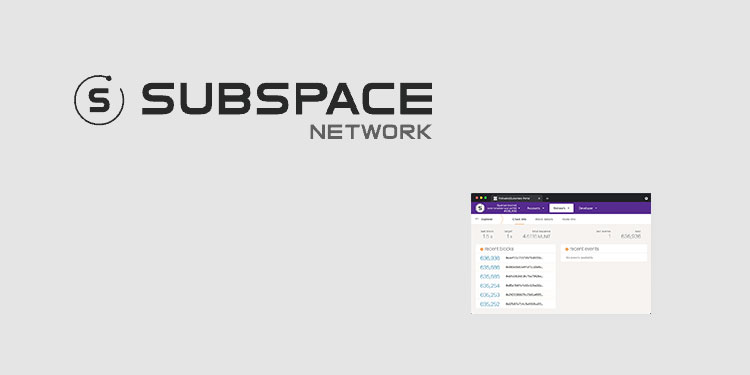Subspace Labs, a distributed research and development company behind the Subspace Network, today announced the appointment of Dr. David Tse to its advisory board. Tse, who is also a distinguished professor of electrical engineering at Stanford University, brings extensive expertise as a leading researcher in the areas of blockchain scalability, security, and sustainability.
A scalable platform for storage and computation, the Subspace Network is designed to fully resolve the blockchain trilemma.
Already having incorporated many of Dr. Tse’s ideas into the design of the Subspace Network, Subspace Labs will now work with him more directly to properly implement key elements of his research.
The blockchain trilemma is a term coined by Vitalik Buterin to describe the challenge of creating a scalable, decentralized, and secure blockchain – stating that only two out of these three features may realistically be achieved. Subspace provides a solution to this problem by combining its own novel consensus algorithm with a host of cutting-edge academic proposals Dr. Tse has co-authored, which allow for maximizing vertical and horizontal scalability without compromising security or decentralization.
“It’s such a privilege to work with a researcher as brilliant as David; we are so excited to have him personally involved in the application of his ideas,” said Jeremiah Wagstaff, Co-Founder & CEO of Subspace Labs. “Since auditing David’s graduate course on scaling blockchain last year, much of his research has been built into Subspace, now we can be sure it’s implemented correctly.”
“While Subspace is an interesting protocol in its own right, it has been even more exciting to see how they have adapted and extended the body of work I’ve contributed to,” said Dr. David Tse. “I look forward to collaborating more closely to help realize the dream of a secure, scalable, and decentralized blockchain!”
Subspace Labs was founded in 2018 by Wagstaff and Nazar Mokrynskyi with a shared vision of creating a scalable base layer for Web3, where users can control their data, and the Internet can work without relying on centralized servers or data centers controlled by tech monopolies. Wagstaff and Mokrynskyi set out to build a platform that would make it easy for anyone to build decentralized applications at scale.
After years of research, largely funded via a grant from the US National Science Foundation, Subspace Labs raised a $4.5M seed round in June 2021 led by Hypersphere Ventures and Stratos Technologies. Currently, the Subspace blockchain is under active development and is built with Parity Substrate, the same framework used to build Polkadot. An early version was funded by a Web3 Foundation Grant.
Consensus in Subspace is based on storage capacity. Farmers (not miners) store as many provably unique segments of the blockchain history as their disk space allows through Proofs-of-Archival-Storage (PoAS), a novel consensus algorithm described in their technical white paper.
PoAS is specially designed to resolve the Farmer’s Dilemma, a mechanism design challenge that limits the scalability of Proof-of-Space blockchains like Chia or Filecoin. Since farming is based on storage, it is eco-friendly and accessible to anyone with a hard drive. Subspace further organizes farmers into a permanent distributed storage service, inspired by the BitTorrent Network, which allows the Subspace blockchain to bloat massively without sacrificing decentralization.
Resolving the Trilemma
Dr. Tse’s research resolves a key aspect of the blockchain trilemma by allowing for secure scaling with decentralized participation in consensus but it does not account for the problem of decentralized storage and synchronization of the blockchain history, often referred to as blockchain bloat.
This problem stood out as a central issue during the Bitcoin Civil War and is a key reason why Ethereum has since resisted attempts to increase on-chain transaction throughput. Because Subspace’s PoAS consensus already handles blockchain bloat, when combined with Dr. Tse’s research, it is the first protocol that is able to fully resolve the blockchain trilemma.
Subspace is a layer zero protocol interoperable with any layer one, allowing it to serve as an infrastructure layer for the Web3 ecosystem. Based on years of original R&D, Subspace aims to be the first protocol to resolve the blockchain trilemma, providing an open, scalable platform for storage and compute.
Currently, Subspace supports Polkadot and Kusama, with more networks coming soon.
